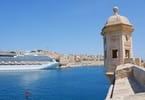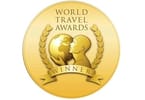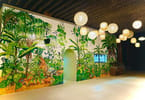TEGUCIGALPA, Honduras – When the Spanish arrived in the Americas, they had no idea that the Central American region was a place that would allow them to cross by land from the Atlantic to the Pacific Ocean in a relatively short period of time. Once they realized how magnificent this opportunity was, they began to explore, ultimately discovering a place they would name Gulf of Fonseca, a fairly large gulf deep enough for large ships, a place today shared by Honduras, El Salvador and Nicaragua, with Honduras having the most coastline along its shores.
What a nice surprise it was for the discoverers to find a place with such incredible landscapes where the sea is interrupted by enormous volcanic massifs visible from afar, a gulf rich in life, visited by giant whales, dolphins and countless birds that make their nests in the mangrove forests that abound along its coasts, a landscape that has not changed much in more than 500 years and whose best ally is Honduras.
There is much for the visitor to see and enjoy. The first thing one notices upon arriving at the gulf’s coast is the commanding location of one island above the sea with the perfect profile of a volcano, the Isla del Tigre, an island named after the English pirate Francis Drake who used the place as a hideout from which to launch his ferocious attacks “like a tiger” against the Spanish vessels that took these routes. At the foot of the island is Amapala, the city that at the beginning of the Twentieth Century was chosen as the home of Italian and German immigrants, a vibrant, attractive city visited even by Albert Einstein, and the first place in Honduras that a U.S. president, Herbert Hoover, had ever visited, along with his entourage, defining a new roadmap of relations between the two countries.
Magnificent events take place daily and others by season. Every day at dawn and dusk, thousands of birds take to the skies above the “Isla de los Pajaros,” producing a deafening sound as they call to one another, proving that there still exit sanctuaries where birds alone rule. It is a place inaccessible by land, the only way to get there by sea, a sea full of life where, year after year, thousands of turtles return without fail to lay their eggs on the same beach where they were born, a chance for children and adults alike to become nannies and guardians of tiny turtles on their way to an unknown sea calling them with their waves. There are the beaches that midyear change color as thousands of crabs elegantly emerge in search of a partner in a spectacular endless parade of pincers pointed toward the sky.
There are so many beaches to walk and enjoy, Los Amates, Raton, Cedeno, Playa Negra, and many more from which to reach by boat several islands of every size, from the tiny Conejo island, which can also be reached on foot during low tide, and more impressive ones such as Providencia, where one should plan to spend the night, climb and camp beneath the clear skies bathed in stars.
The Gulf of Fonseca is also responsible for filling our plates with abundant options, shrimp, lobster, octopus, and many varieties of fish and mollusks, among which is one we call the “curil,” known as an aphrodisiac and energizer, energy the visitor will need in order to have enough strength to discover every corner of this marvelous living paradise in southern Honduras.






















